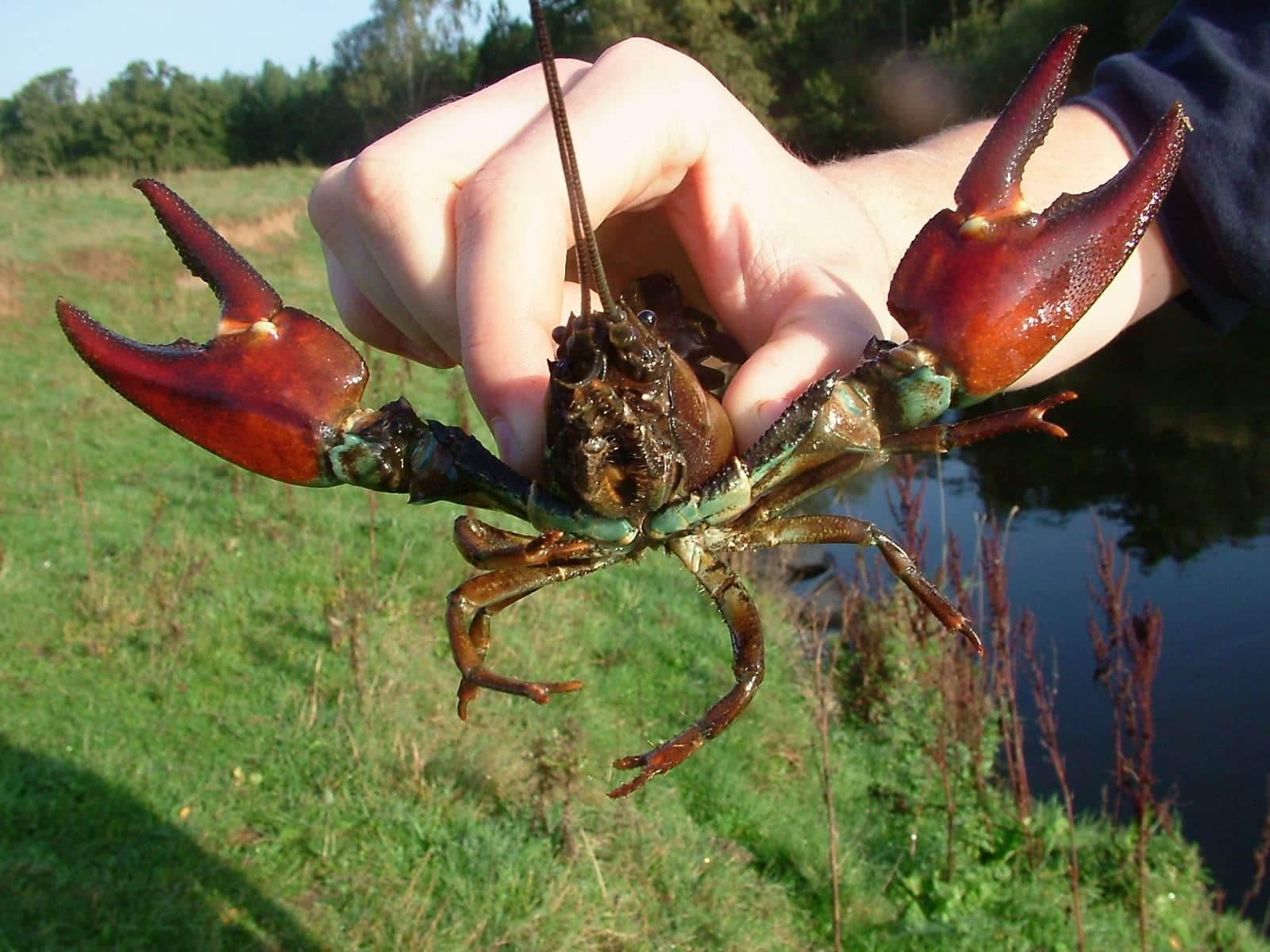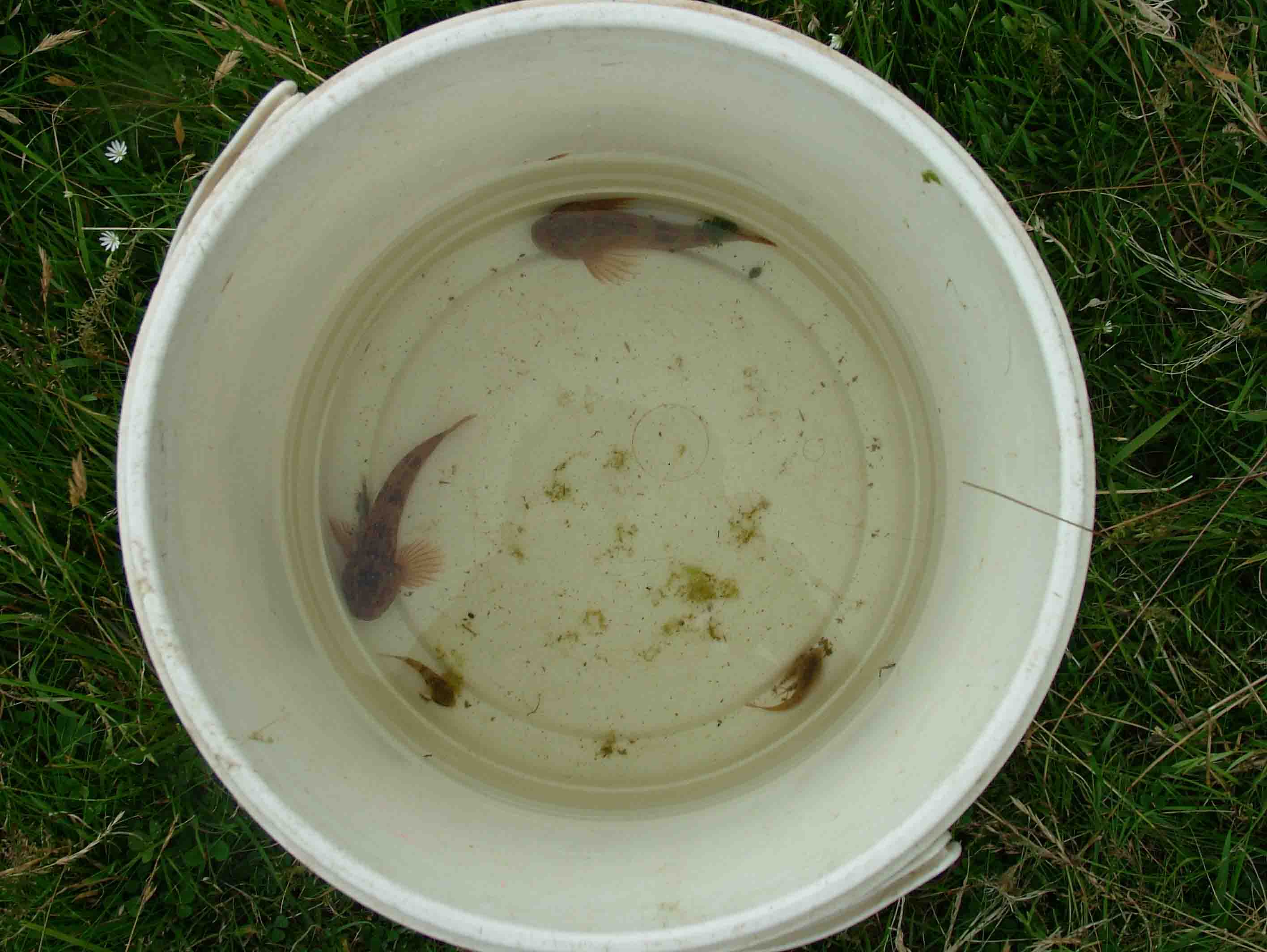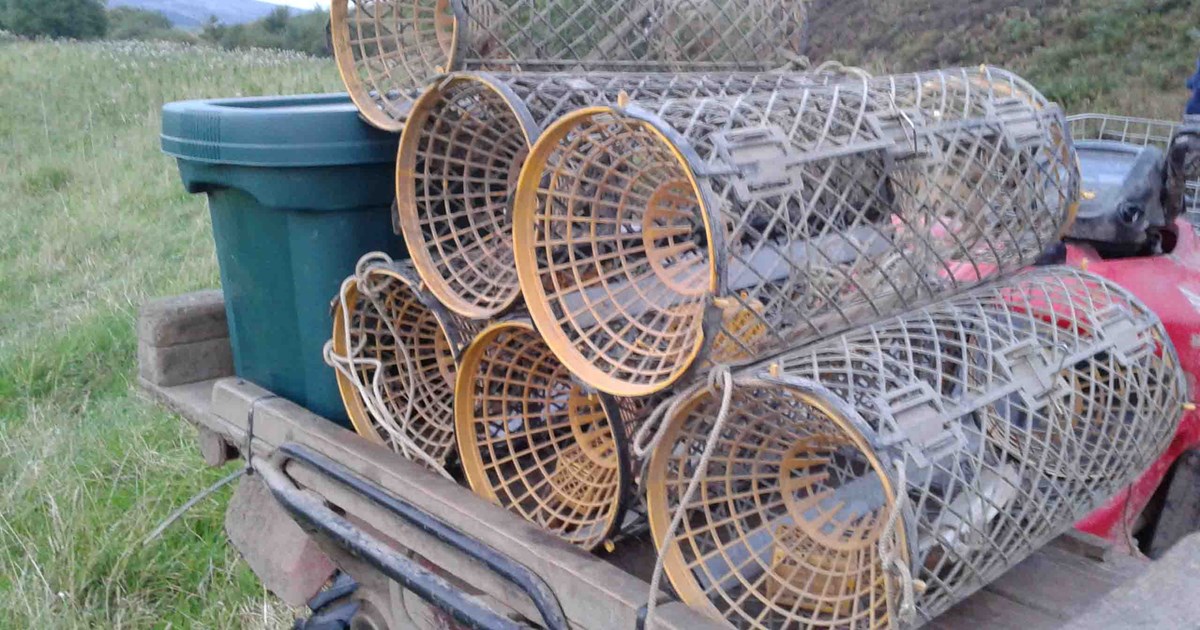Signal Crayfish
Signal Crayfish are a North American species non-native to the Tweed but in recent years they have been found in several locations throughout the Tweed catchment.
Global biodiversity is in decline, and one of the major drivers of this loss is the spread of non-native species. Non-native species (NNS) are animals and plants that have been transported beyond their natural range through human activity, whether intentionally or unintentionally. When these species establish and begin to outcompete native wildlife, they can become invasive, causing significant ecological damage and placing pressure on local economies. Effective biosecurity measures are therefore essential to limit the impacts of invasive non-native species (INNS) and to prevent new introductions.
Water provides an ideal pathway for the movement of non-native animals and plants, making rivers, lochs, and their surrounding habitats particularly vulnerable to INNS. The River Tweed already hosts several invasive species and remains at risk from others spreading into the catchment. To help control their spread and minimise their impact, the Tweed Foundation, working in partnership with key stakeholders, has developed a comprehensive Catchment Biosecurity Plan

The Tweed Biosecurity Plan describes the biosecurity issues of the Tweed and Eye Catchments and presents actions for the prevention, early detection, control and mitigation of the introduction and spread of selected non native species (NNS), fish diseases and parasites.
The aim of this plan is:
‘To further develop a practical framework to prevent, detect, control and eradicate specified non-native species within the Tweed catchment through coordinated data collection, management, liaison, and education’.
The Tweed Catchment Biosecurity Plan can be viewed here.
Anglers and others using the water can help prevent the spread of unwanted species by following three simple steps: Check, Clean, Dry.


Biosecurity is hugely important in maintaining a healthy river system and measures are required to control INNS already present and to prevent the introduction of others.
The Tweed Foundation uses several different methods to control and prevent the spread of INNS in the Tweed catchment.
We are always on the lookout for non-native species (NNS) throughout the Tweed catchment and if you spot any or see signs of them in or around the river, please get in touch to let us know what you have seen and where.
Anglers and others using the water course can also help prevent the spread of unwanted species by following three simple steps: Check, Clean, Dry.

Several NNS have been highlighted in the Plan as being "high impact species", either because they already exist in the Tweed catchment, or the risk they would pose to the local biodiversity and economy if introduced.
Several of these non-native species can be seen below, some of which are already in the catchment, while others pose a high risk if introduced.

Signal Crayfish are a North American species non-native to the Tweed but in recent years they have been found in several locations throughout the Tweed catchment.

The Bullhead is a species native to the South of England but not to the Tweed. It has recently been found in a tributary to the Tweed.

Pink Salmon (native to the Pacific Ocean) were introduced to the Atlantic Ocean and are now occasionally found in rivers across Scotland, including the Tweed.

Gyrodactylus salaris is a freshwater external parasite of Salmon. It is not yet found in the Tweed but if it does reach Scotland it could have a catastrophic impact on Salmon.

Killer Shrimp are a voracious predator and can do serious harm to freshwater ecosystems. Killer Shrimp have not been found in the Tweed system but they have now been found in England.

The Chinese Mitten Crab reached Europe in the 20th Century and is now found in rivers throughout England, including the River Tyne. This species poses a high risk if introduced to the Tweed.

Giant Hogweed, native to the Caucasus Mountains and Central Asia, is an invasive species of plant found on the banks of the River Tweed.

Japanese Knotweed, native to East Asia, is one of the more common invasive non-native species throughout Europe and North America.

Himalayan Balsam is native to the Himalayas but has successfully spread throughout much of the Northern Hemisphere.